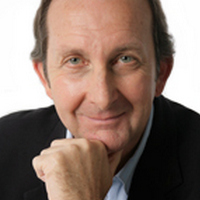

While I’ve taken a few long shots in today’s Melbourne Cup, gambling that the next move in rates is up isn’t something I’m prepared to bet on.
With the expected interest rate cut a scratching today, economists who once all thought at least two rate reductions were on the cards before the easing cycle was over, now have some number crunchers tipping the next move will be up for the cash rate!
So, who’ll be right? While headline hopers for attention will categorically argue the next move is up, let me assure you there are plenty of smart economists who still think we’ll see another cut or two, but we’ll just have to be patient.
What’s my view? Well, the answer is simple — I don’t know because we’re living in unusual times and there are too many economic curve balls that make hitting forecasts out of the park harder than normal.
In late 1987 when the stock market crashed, I interviewed J.K. Galbraith, one of the world’s most respected economists, who served as the deputy director of the powerful Office of Price Administration during World War II, in charge of stabilizing all prices, wages and rents in the American economy, to combat the threat of inflation and hoarding during a time of shortages and rationing, a task that was successfully accomplished. (Wikipedia).
Galbraith also penned many best-selling books. One was called The Age of Uncertainty and was turned into a TV show that normal people watched!
When I asked Galbraith if the 22.6% crash of the Dow Jones Industrial Average in one day would create another 1930s-style Great Depression, he gave me an answer I’ve never forgotten.
He said: “Peter, there are two types of economists out there right now. There are those like me who will say they don’t know and then there are those poor types who don’t know they don’t know!”
The same applies to our economy right now. What we have seen since the last rate cut in August is a surprisingly bigger-than-expected rise in inflation that has tricked most of our well-known economists.
Back in August, Canstar reported: “Economists at the nation’s big four banks all predicted that the RBA would slash rates in August, after the release of June quarter CPI data showed that inflation was within the RBA’s target band for the second consecutive quarter.”
However, since that time, inflation has trended up and wasn’t helped by the end of the government rebates to lower the prices on our power bills.
And just how the rise in inflation has shocked economists, it’s entirely possible they could be surprised about the following:
Rather that speculating on the worst-case scenario of an imminent rate rise, let’s see what the respected economics teams are saying:
Here’s the view from AMP: “Our pipeline inflation indicator which accounts for domestic and global factors is also still indicating a trend down. So, in our view, inflation can still track back down into the RBA’s target band (rather than running above it), but it will take longer to get there than we had expected.”
And now words from Westpac: “Expects rate cuts in May and August next year”.
And CBA’s comments: “In response to the strong signal this provides for underlying inflationary pressures, we no longer expect the RBA will cut the cash rate in February. Instead, we now see the RBA holding rates at 3.6% for an extended period.”
Not forgetting NAB: Tips a rate cut won’t happen before May next year.
And finally, The Money Market: Rates are seen bottoming at 3.35% by mid-2026 from the current 3.6%, implying just one remaining cut in the easing cycle.
When I’m confident about what’s going on in the economy, I make big calls. However, right now, the data drops aren’t easy to predict but I suspect we’ll see at least another rate cut but that will follow a period where the RBA plays a ‘wait-and-watch’ game.
One final point needs to be made. As the RBA was trying to slow the economy and beat inflation, the federal and state governments were spending. A lot of it was a hangover of the Covid lockdowns that needed big government spending to avoid a Great Depression.
That also brought the work-from-home trend, an escalation of mental health claims for worker’s compensation and a huge surge in spending on the NDIS. There were also tax cuts to help lower income Australians and also some vote-winning reasons behind some of these demand-increasing, inflation-creating policies.
And that’s why there are so many curve balls affecting economic statistics and the calibre of the calls by economists about what’s going on with inflation and other key data drops.
The bottom line is simple — don’t rule out another rate cut, but you’ll need to be patient. Right now, few respected economists expect a rate rise any time soon.